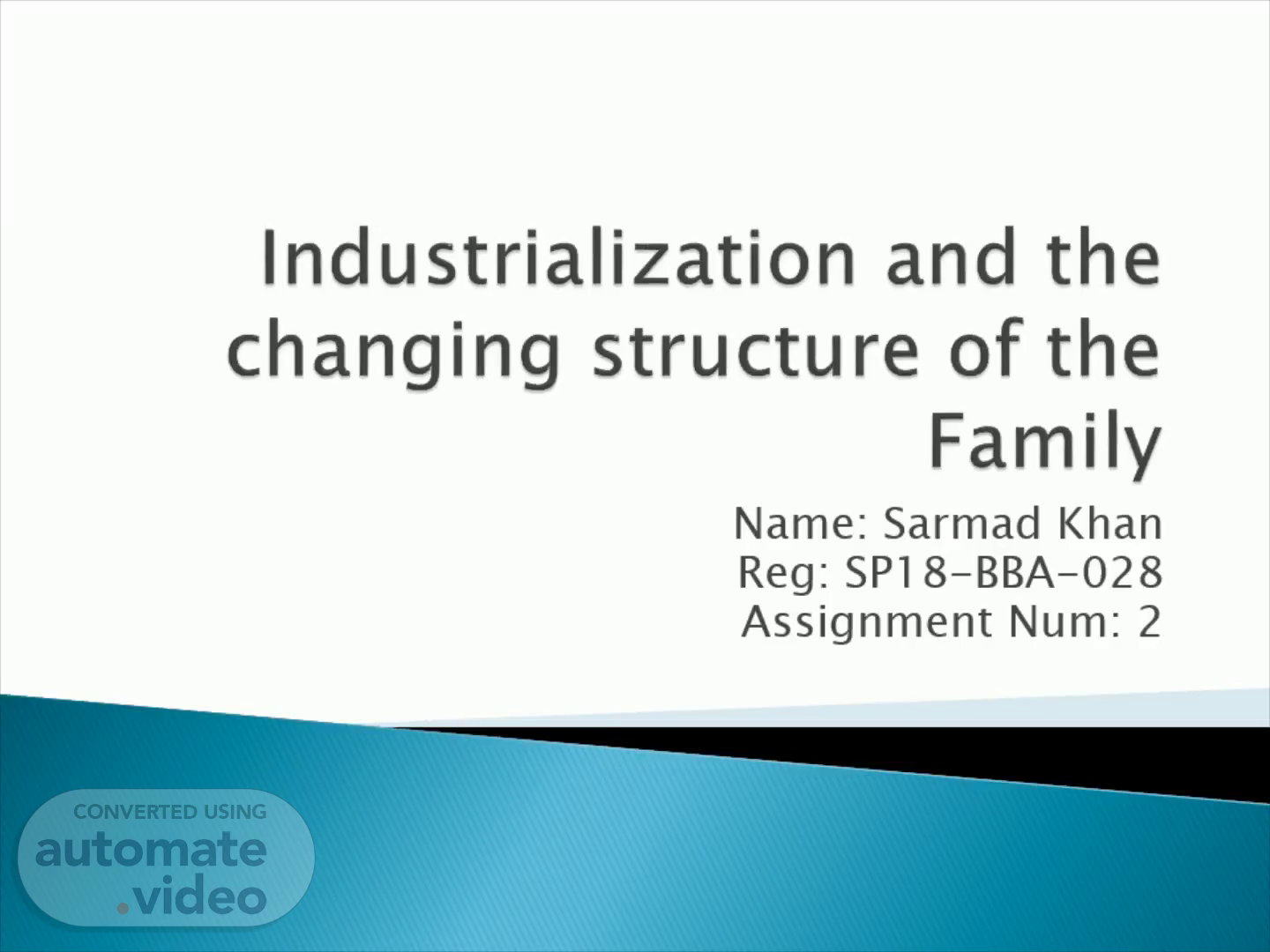
Industrialization and the changing structure of the Family
Scene 1 (0s)
Industrialization and the changing structure of the Family.
Scene 2 (9s)
The industrialization debate by Parson. In the Family, individual status is ascribed- the role which they play is not of their own choice or choosing it is given to them. If you are a son or a daughter, there is nothing you can do about it. Whereas, in pre industrial society where mobility was restricted social status was similarly ascribed. In all areas of life, you were given a status but not by your choice..
Scene 3 (32s)
Increasing social and geographical mobility Lot of problems.
Scene 4 (39s)
Well in pre industrial society there were just two family patterns, firstly the nuclear family and secondly the extended family. Extended family is a type of family in which all live together. Uncle, Aunts, Cousins, Brothers, Sisters, Nephews etc. Nuclear Family is a type of Family in which you live with your parents. For example, 2 children and parents..
Scene 5 (59s)
In industrial society, Nuclear family was found to be dominant and is still dominant. Further as we moved from pre industrial period to Industrial period so we observed different pattern of Families, which includes Patriararchal Families, Matriarchal Families, Single Parent Families and others..
Scene 6 (1m 15s)
Patriarchal Families:- Father or male has dominant authority over the family. 2. Matriarchal Family:- Mother or female has absolute authority over family. 3. Single-Parent Families:- A parent bring up a child alone without a partner..
Scene 7 (1m 30s)
First, women were not allowed to do work but now they work and earn, so don’t face social stigma anymore. Economic prosperity and demographic change both have played essential role in changing pattern of household. In UK 15% elders lived alone in 1951 but now 60% elders live on their own. Also some regional diversity in patterns of family life..